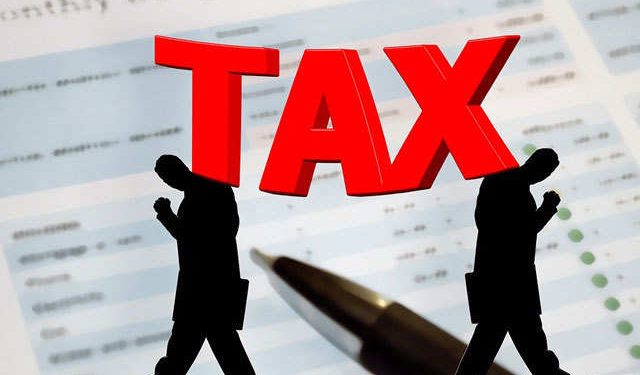Taxes are an inevitable part of the life of every American who earns more than $12,000 per year. But if you’re a self-employed individual business coach, you might have to pay your taxes four times per year instead of just once like most full-time employees.
The process of paying quarterly taxes is common amongst freelancers and independent contractors. As a self-employed business coach, you are required to pay estimated quarterly taxes using Form 1040-ES if your Federal tax liability is over $1,000 for the year. Not doing so can result in penalties that range from 6-8% annually.
To figure out how much you owe, you can use the IRS’ Estimated Tax Worksheet found within Form 1040-ES. You will be required to figure out your adjusted gross income, taxable income, credits, deductions, and general tax liability. Form 1040-ES will help you figure out the amount you’ll owe for the year. Using that form, you’ll divide the amount by four (quarters), and pay in equal installments before the tax due dates.
Quarterly tax due dates come around like clockwork— but remembering to pay on time is tricky, even for seasoned freelancers. You are required to pay your quarterly taxes four times each year. The quarterly tax dates are:
- April 15
- June 15
- September 15
- January 15
Quarterly taxes can be daunting. A lot of freelancers and self-employed individuals worry about saving enough cash to pay the taxes, due to their irregular income.
So it’s very important to plan and set money for taxes.
Pay Quarterly Taxes As A Business Coach
The IRS allows self-employed people the ability to seek deductions on anything considered “ordinary and necessary” to run their business. Unfortunately, a lot of freelancers aren’t aware of business deductions that can reduce their tax amount and maximize their savings.
The following list represents some of the common expenses incurred by business coaches that can be used as tax deductions: Accounting fees, Advertising (including website design and social media presence), Startup cost, Banking fees, Business travel, Computers, and related tech equipment, Consulting fees, Home office, License fees, Office supplies, Rent, Telephone service and equipment, and Utilities.
Start-up Cost:
As a business coach, if you’re working towards building your business, you can claim tax deductions on equipment, website development, marketing expenses, or any cost incurred to set up your business.
Equipment and Gear:
You can claim tax deductions for your laptop, microphone, and headphones, or any other equipment bought to provide online services to your clients.
Home-office:
You can claim the home office deduction by setting up your business premises at your home. Here, you can proportionately split your home rent/mortgage interest and utility bills into personal expenses and business expenses, depending on the portion of space your office space consumes.
Mileage:
If you use a personal vehicle to commute for business, you can claim car expenses like gas and maintenance as a deduction, as long as they occurred in the course of your work.
Classes, Workshops, and Conferences:
tuition, books, and educational expenses are deductible as long as they’re directly related to your business. As a business coach, you may be required to attend a few workshops or conferences to broaden your horizon. Thus, the admission fee to any of these events is usually deductible.
Subscriptions and Memberships:
As a business coach, you might be subscribed to different apps for magazines and video tutorials. All supplies purchased, such as magazine subscriptions, streaming services, video tutorials, workout DVDs, and paid downloads, could be deductible if used solely for the client.
Taking advantage of these business deductions will help you save lots of money. However, don’t get too greedy with deductions, as they can trigger an IRS audit. However, as a business coach, you are allowed to claim these deductions since you need to keep up with trends in your profession.
Most tax preparers call it “research,” but be prepared to justify it. In any case, do not deduct every book or conference you attend in the year; since they all can’t be “research.”
Once you’ve figured out the appropriate deductions, it is time to calculate your quarterly taxes. To do so, you need to consider a few things: your expected adjusted gross income, taxable income, taxes, deductions, and credits for the year. When it comes to paying taxes, it is always better to rely on calculation than estimating it.
It’s important to keep track of your deductions so you can accurately pay your taxes. You can use tax engines like FlyFin A.I., which automates your tax payments for every quarter, not just the end of the year. The app allows you to track expenses and income on an “ongoing” basis, making your quarterly taxes easier and more accurate.
FlyFin can help you perform the calculations and provide you with an accurate quarterly tax amount, just like it helped Danielle.
Final Words
FlyFin’s quarterly tax calculator provides the most accurate quarterly tax calculations based on your income and deductions. The A.I. scans your expenses and automatically finds deductions. It is also reviewed by CPAs. You just have to answer a few questions, and you will receive an accurate quarterly tax amount within 5 minutes.
Since the deadline for the quarterly taxes is right around the corner, try FlyFin to figure out the exact amount you owe.
It’s essential to track expenses, but relying on traditional methods of bookkeeping can be difficult and frustrating. Use FlyFin to automate your expenses to lower your taxes and maximize your savings.
Follow Techdee for more!





